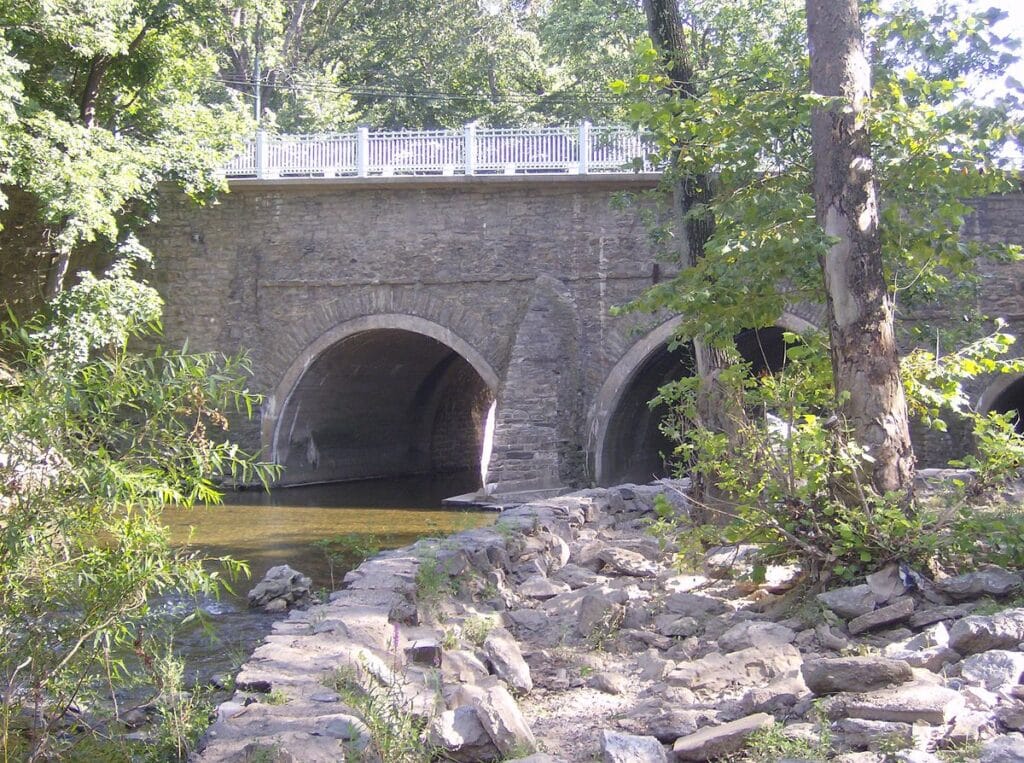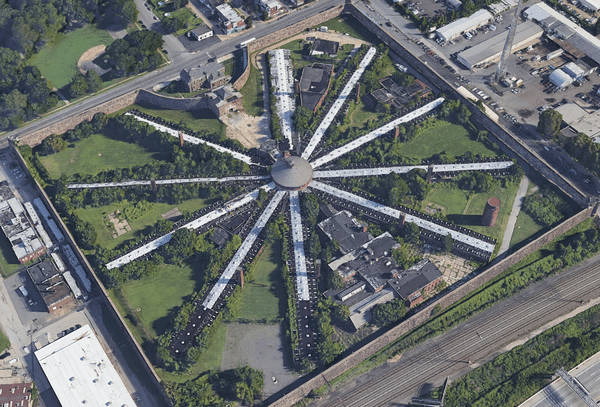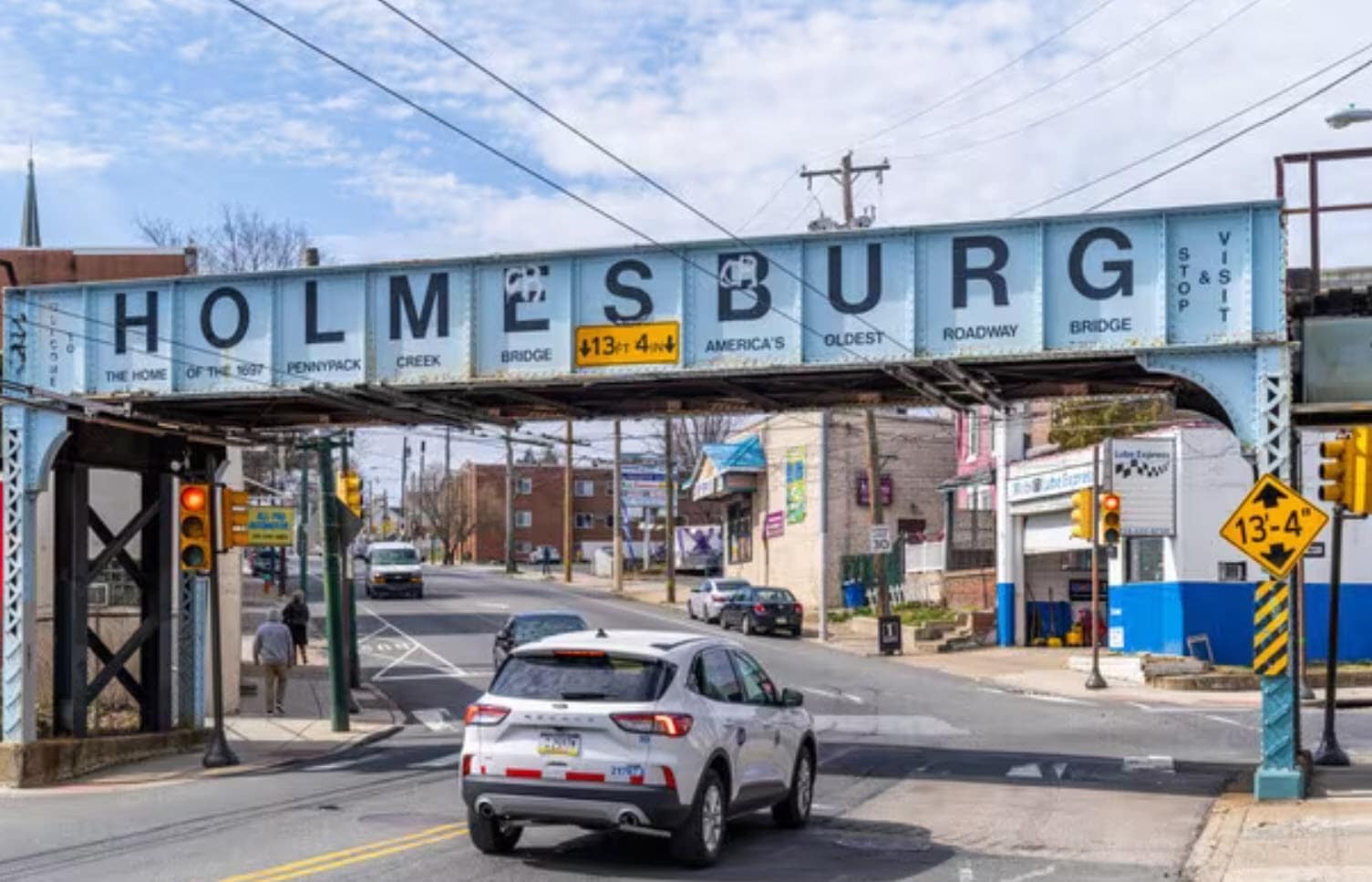Holmesburg: A Historic Neighborhood in Philadelphia
Holmesburg, a neighborhood located in the Northeast section of Philadelphia, is a place rich in history and natural beauty. With its roots dating back to the late 17th century, Holmesburg has played a significant role in the development of the city. From its establishment as a village within Lower Dublin Township to its status as a thriving urban-village today, Holmesburg has maintained its charm and continues to be a center of business and civic consciousness in Greater Northeast Philadelphia.
Early Settlement and Development
The history of Holmesburg can be traced back to the Lenape Indians, who recognized the area’s strategic location along the Pennypack Creek. The shallow fall line of the creek made it an ideal crossing point, and the Lenape used it as a trail to their hunting grounds. European settlers soon recognized the potential of the location and established a grist mill, dam, and mill race on the creek in 1697. This marked the beginning of Holmesburg’s development as a center for water-powered mills and river commerce.
The Growth of Holmesburg

Over time, Holmesburg grew in importance and became a thriving community. The King’s Highway Bridge, constructed in 1697 and still in use today, connected Holmesburg to the new city of Philadelphia. The bridge facilitated trade and transportation, further contributing to the growth of the neighborhood. In the 18th century, stagecoach service was established between Philadelphia and New York, with Holmesburg serving as a rest stop along the route. In 1834, the Philadelphia and Trenton Railroad opened, bringing even more opportunities for commerce and travel to the area.
Prominent Landowners and Institutions
Holmesburg was home to several prominent landowners and institutions that shaped its development. John Holme, a Baptist minister and magistrate, immigrated to Philadelphia in the 1680s and became a prominent citizen in Holmesburg. His descendants, who owned a portion of the Pennypack grist mill and a lumber business, played a significant role in the community. The estate they established, called Box Grove, added to the prestige of Holmesburg. The neighborhood is also known for Stoneyhurst, an eighteen-bedroom mansion built by George A. Castor, a successful merchant tailor. Today, the mansion is occupied by the motherhouse of the sisters of the Missionary Servants of the Most Blessed Trinity.
Educational Institutions
Education has always been a priority in Holmesburg. The Thomas Holme Branch Library, completed in 1906, is a testament to the community’s commitment to learning. The library, designed in the Beaux Arts style by architect Horace W. Castor, provides a valuable resource for residents. Holmesburg is also home to several educational institutions, including Joseph H. Brown Elementary School, Meehan Middle School, and Abraham Lincoln High School. Additionally, St. Dominic Roman Catholic Church and grade school, Father Judge High School, and St. Hubert High School for Girls contribute to the educational landscape of the neighborhood.
Parks and Recreation
Holmesburg is blessed with natural beauty and recreational opportunities. Pennypack Park, located along the Pennypack Creek, offers residents and visitors a chance to enjoy nature, go for walks, and engage in various outdoor activities. The park’s acquisition in the early 20th century ensured the preservation of this green oasis in an otherwise urban setting. Holmesburg Recreation Center and James Ramp Memorial Playground provide additional spaces for community members to gather, play, and socialize. The neighborhood takes pride in its commitment to preserving and enhancing its natural surroundings.
Transportation and Accessibility
Holmesburg benefits from its strategic location and accessibility. SEPTA’s Trenton Line commuter train offers a convenient 25-minute ride to Center City Philadelphia, connecting residents to urban amenities and employment opportunities. Several SEPTA bus routes serve the neighborhood, providing transportation options to other areas of Northeast Philadelphia and surrounding suburban areas. Interstate 95, a major highway, is easily accessible from Holmesburg, making commuting to downtown Philadelphia and other destinations convenient.
Historic Landmarks and Preservation
Holmesburg is home to several historic landmarks that reflect its rich history. The Frankford Avenue Bridge, built in 1697, is the oldest stone arch bridge in continuous use on a major highway in the Americas. Its architectural significance and historical importance make it a cherished landmark in the neighborhood. The Joseph H. Brown School and Pennypack Theater Building, both listed on the National Register of Historic Places, add to the cultural and historical fabric of Holmesburg.
Prisons and African-American Community

The neighborhood has a unique connection to the Philadelphia Prison System. Holmesburg Prison, which opened in 1896, was part of the city’s correctional facilities. Notably, the prison gained attention for the non-therapeutic medical experiments conducted on inmates from 1951 to 1974, as documented in the book “Acres of Skin” by Allen Hornblum. Additionally, Holmesburg contains one of the longest continuous African-American communities in the United States. Founded by runaway slaves before and during the Civil War, this community has contributed to the diverse and vibrant character of Holmesburg.
Future Development and Growth
Holmesburg continues to evolve and adapt to the changing needs of its residents. Holy Family University has plans to construct buildings at the former Liddonfield Projects site, contributing to the economic and educational growth of the neighborhood. As Holmesburg moves forward, it remains committed to preserving its historic character, promoting community engagement, and embracing opportunities for sustainable development.
Holmesburg, with its deep historical roots, natural beauty, and vibrant community, stands as a testament to the enduring spirit of Philadelphia. From its early beginnings as a village within Lower Dublin Township to its present-day status as a thriving urban-village, the neighborhood has proven itself to be a neighborhood that values its past while embracing the future. As the years go by, Holmesburg will continue to write its own unique chapter in the storied history of Philadelphia.
